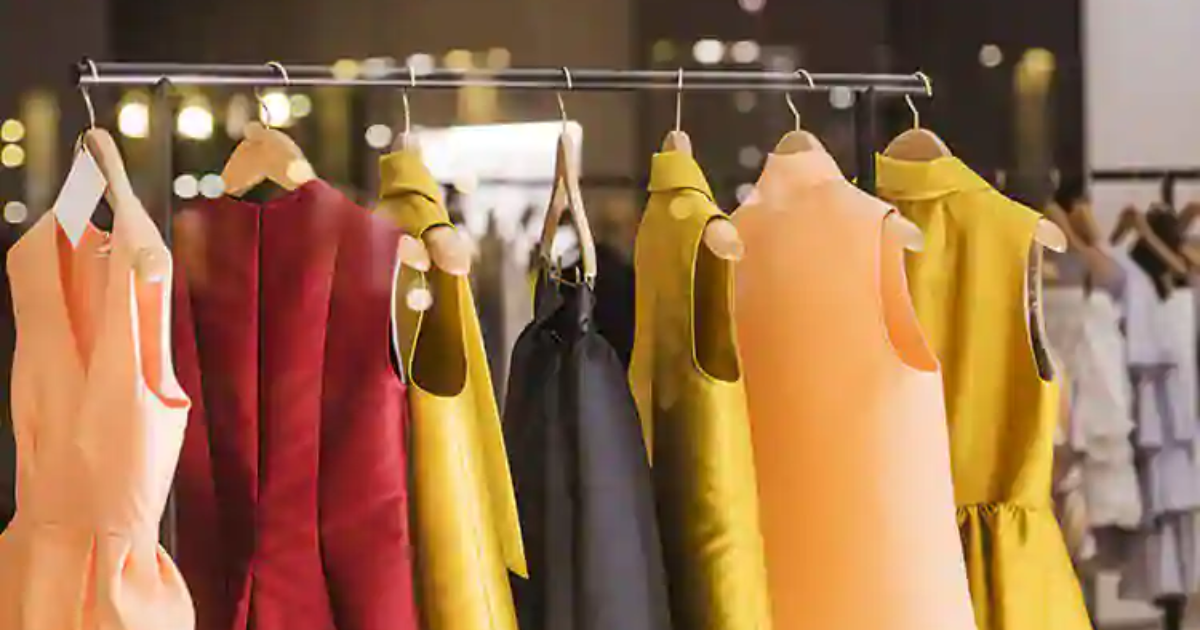Aritzia, a Canadian fashion retailer, has gained significant popularity in recent years, especially among young women. Known for its trendy yet sophisticated designs, the brand has expanded its presence in the United States market. However, as consumers become more conscious of sustainable fashion, questions arise about Aritzia’s business model.
Aritzia’s approach to fashion, examining various aspects of their operations and practices. We’ll analyze their production methods, sustainability efforts, and overall business strategy to determine if Aritzia falls under the fast fashion category. By the end, readers will have a clearer understanding of Aritzia’s position in the fashion industry.
Understanding Fast Fashion
Fast fashion refers to a business model characterized by rapid production of inexpensive, trendy clothing. This approach prioritizes quick turnaround times and low costs over quality and sustainability. Fast fashion brands typically release new collections frequently, sometimes weekly, to keep up with current trends.
The fast fashion model has faced criticism for its environmental impact and labor practices. It often leads to overproduction, excessive waste, and poor working conditions in factories. As consumers become more aware of these issues, many are seeking alternatives to fast fashion brands.
Characteristics of Fast Fashion
To determine if Aritzia fits the fast fashion mold, we must first understand the key characteristics of this business model:
- Rapid production cycles and frequent new releases
- Low-cost manufacturing and materials
- Emphasis on current trends over timeless styles
- Short-lived garments designed for limited wear
- Large-scale production and global supply chains
These factors contribute to the fast fashion industry’s ability to offer trendy clothing at low prices. However, they also lead to significant environmental and social challenges that have sparked debate in recent years.
The Impact of Fast Fashion
The fast fashion industry has far-reaching consequences that extend beyond just clothing production:
- Environmental damage due to excessive waste and pollution
- Exploitation of workers in developing countries
- Promotion of overconsumption and disposable culture
- Depletion of natural resources and increased carbon footprint
As these issues gain more attention, consumers and brands alike are reconsidering their approach to fashion. This shift in perspective sets the stage for our analysis of Aritzia’s business model.
Aritzia’s Business Model
Aritzia positions itself as a purveyor of high-quality, design-driven fashion for women. Founded in Vancouver in 1984, the company has grown to become a significant player in the North American market. Aritzia’s approach focuses on creating in-house brands that cater to different style preferences and price points.
The company emphasizes quality materials and craftsmanship in their products, setting them apart from typical fast fashion retailers. Aritzia’s collections include a mix of trendy pieces and classic staples, aiming to provide versatile options for their customers.
Production and Supply Chain
Aritzia’s production methods differ from those of traditional fast fashion brands in several ways:
- Emphasis on quality control and craftsmanship
- Partnerships with established manufacturers rather than lowest-cost suppliers
- Smaller production runs to maintain exclusivity
- Blend of in-house design and collaborations with external designers
These practices suggest a more thoughtful approach to production compared to fast fashion norms. However, Aritzia still faces challenges in terms of transparency and sustainability in their supply chain.
Pricing and Target Market
Aritzia’s pricing strategy places them in a higher bracket than typical fast fashion retailers:
- Mid to high-range prices for most items
- Focus on perceived value and quality over lowest possible cost
- Target market of young professional women with disposable income
- Premium positioning compared to fast fashion competitors
This pricing approach indicates that Aritzia is not competing directly with budget-friendly fast fashion brands. Instead, they aim for a more upscale market segment that values quality and style.
Sustainability Efforts
As sustainability becomes increasingly important to consumers, Aritzia has taken steps to address environmental concerns. The company has launched initiatives aimed at reducing their environmental impact and improving their overall sustainability profile.
While these efforts are commendable, some critics argue that Aritzia could do more to fully embrace sustainable practices. The company continues to face challenges in areas such as supply chain transparency and material sourcing.
Aritzia’s Sustainability Initiatives
Aritzia has implemented several programs to improve their environmental and social impact:
- Introduction of more sustainable materials in certain product lines
- Efforts to reduce packaging waste and increase recycling
- Commitment to ethical labor practices in their supply chain
- Support for various social and environmental causes
These initiatives demonstrate Aritzia’s awareness of sustainability issues and their efforts to address them. However, the company still has room for improvement in fully integrating sustainability into their business model.
Challenges and Criticisms
Despite their sustainability efforts, Aritzia faces several challenges and criticisms:
- Lack of full transparency in their supply chain
- Limited use of organic or recycled materials across all product lines
- Continued reliance on synthetic fabrics in many garments
- Criticism for not doing enough to reduce overall environmental impact
Addressing these concerns will be crucial for Aritzia as they continue to navigate the changing landscape of consumer expectations. The company’s response to these criticisms will shape their future sustainability efforts.
Comparing Aritzia to Fast Fashion Brands
To determine if Aritzia qualifies as fast fashion, it’s helpful to compare their practices to those of established fast fashion brands. This comparison reveals both similarities and differences in their approaches to production, pricing, and sustainability.
While Aritzia shares some characteristics with fast fashion retailers, they also diverge in significant ways. Understanding these differences is key to assessing Aritzia’s position in the fashion industry spectrum.
Similarities to Fast Fashion
Aritzia does share some practices commonly associated with fast fashion brands:
- Regular introduction of new styles and collections
- Focus on current trends and seasonal offerings
- Use of social media and influencer marketing to drive sales
- Global supply chain with production in various countries
These factors indicate that Aritzia is not immune to the pressures of the modern fashion industry. They must balance consumer demand for newness with sustainable practices.
Differences from Fast Fashion
However, Aritzia also differs from typical fast fashion brands in several important ways:
- Higher price points and emphasis on quality
- Longer production cycles and less frequent releases
- Greater focus on classic styles alongside trendy pieces
- More attention to sustainability and ethical practices
These differences suggest that Aritzia occupies a space between fast fashion and luxury brands. Their approach aims to balance trendiness with quality and sustainability.
You Like To Read More:
How Chrisean Rock Celebrated Her Birthday and Her Son’s Birthday
The Verdict: Is Aritzia Fast Fashion?
After analyzing various aspects of Aritzia’s business model, it’s clear that categorizing them is not straightforward. While they share some characteristics with fast fashion brands, Aritzia also demonstrates practices that set them apart.
Ultimately, Aritzia may be best described as occupying a middle ground in the fashion industry. They blend elements of fast fashion with a more premium approach, creating a unique position in the market.
Factors Against Fast Fashion Classification
Several aspects of Aritzia’s business model argue against classifying them as purely fast fashion:
- Higher quality materials and construction compared to typical fast fashion
- More emphasis on timeless pieces alongside trendy items
- Higher price points that suggest a focus on value over cheapness
- Efforts towards sustainability and ethical practices, though still developing
These factors indicate that Aritzia is striving for a more sustainable and quality-focused approach than traditional fast fashion brands. Their business model aims for a balance between trend-responsiveness and lasting value.
Factors Supporting Fast Fashion Classification
However, some aspects of Aritzia’s operations align with fast fashion practices:
- Regular introduction of new styles to keep up with trends
- Global supply chain with potential transparency issues
- Use of synthetic materials in many products
- Pressure to maintain a high turnover of styles
These elements suggest that Aritzia still faces challenges in fully breaking away from fast fashion norms. Balancing consumer demand with sustainable practices remains an ongoing process for the company.
FAQs
Is Aritzia considered a luxury brand?
Aritzia is not typically classified as a luxury brand, but rather as a premium or contemporary fashion retailer.
How often does Aritzia release new collections?
Aritzia introduces new styles regularly, with major seasonal collections and frequent smaller releases throughout the year.
Does Aritzia use sustainable materials?
Aritzia has introduced some sustainable materials in certain product lines, but not across their entire range.
How does Aritzia’s pricing compare to fast fashion brands?
Aritzia’s prices are generally higher than typical fast fashion brands, reflecting their focus on quality and design.
What efforts is Aritzia making towards sustainability?
Aritzia has initiatives for sustainable materials, ethical labor practices, and reduced packaging waste, but faces ongoing challenges.
Conclusion
Aritzia occupies a unique position in the fashion industry, blending elements of fast fashion with a more premium approach. While they share some characteristics with fast fashion brands, their focus on quality and sustainability sets them apart. Aritzia’s business model suggests a middle ground between fast fashion and luxury, aiming to balance trend-responsiveness with lasting value. As consumer awareness of sustainability grows, Aritzia’s continued efforts in this area will be crucial. Ultimately, whether Aritzia is considered fast fashion may depend on individual perspectives and evolving industry standards.


